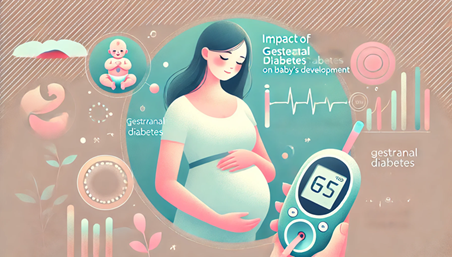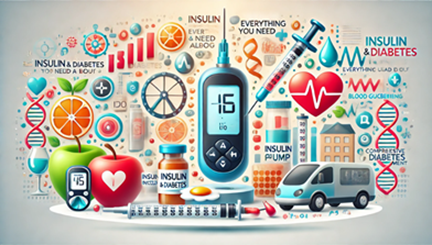Prediabetes and HbA1c: Early Warning Signs to Watch

Diabetes is a complex condition that affects millions of people worldwide. Proper management and early diagnosis are essential in preventing complications associated with the disease. One of the most critical tools in monitoring and diagnosing diabetes, including gestational diabetes and prediabetes, is the HbA1c test. This test provides a reliable measure of blood sugar control over an extended period. In this article, we’ll dive deep into understanding what HbA1c is, its significance in diabetes management, and its role in gestational diabetes and prediabetes.
What is HbA1c?
HbA1c, or glycated hemoglobin, is a measure of how much glucose (sugar) is attached to hemoglobin, the protein in red blood cells that carries oxygen. When blood sugar levels are high, more glucose binds to hemoglobin. Since red blood cells live for about 8-12 weeks, the HbA1c test provides an average of blood sugar levels over the past two to three months.
This test is often referred to as the “three-month blood sugar average” and is expressed as a percentage. A higher percentage indicates poor blood sugar control, which can increase the risk of complications from diabetes.
Why is HbA1c Important?
Monitoring HbA1c levels is crucial in diabetes management for several reasons:
- Long-term insight: Unlike daily blood sugar tests, HbA1c gives a broader view of how well blood sugar is controlled over time.
- Prevention of complications: By keeping HbA1c levels within a target range, patients can significantly reduce the risk of diabetes-related complications like heart disease, kidney damage, and vision loss.
- Assessing treatment efficacy: For those already diagnosed with diabetes, HbA1c helps healthcare professionals determine if current treatments (diet, medication, lifestyle changes) are effective or need adjustment.
HbA1c and Prediabetes
Prediabetes is a condition where blood sugar levels are higher than normal but not yet high enough to be diagnosed as diabetes. People with prediabetes have an increased risk of developing type 2 diabetes, heart disease, and stroke.
The HbA1c test is a key tool in diagnosing prediabetes. According to the American Diabetes Association, an HbA1c level between 5.7% and 6.4% indicates prediabetes. Monitoring HbA1c in individuals with prediabetes can help them take proactive steps to lower their risk of progressing to full-blown diabetes through lifestyle changes, such as improving diet and increasing physical activity.
HbA1c and Gestational Diabetes
Gestational diabetes occurs when blood sugar levels become elevated during pregnancy. This condition can affect both the mother and the baby, leading to potential complications such as high birth weight, preterm birth, and future risk of type 2 diabetes for both.
Although the oral glucose tolerance test (OGTT) is the standard diagnostic tool for gestational diabetes, HbA1c can also be useful in monitoring blood sugar control throughout pregnancy. Keeping blood sugar levels within a safe range is crucial to minimizing risks for both mother and child. After delivery, women who had gestational diabetes are often encouraged to continue monitoring their HbA1c levels, as they are at a higher risk of developing type 2 diabetes later in life.
Understanding HbA1c Results
The results of an HbA1c test are typically classified as follows:
- Below 5.7%: Normal
- 5.7% to 6.4%: Prediabetes
- 6.5% or higher: Diabetes
For people managing diabetes, healthcare providers usually recommend an HbA1c target below 7% to reduce the risk of complications. However, this target may vary depending on individual health conditions and age. It’s essential to work closely with your healthcare provider to determine the best target for your situation.
How to Lower HbA1c Levels
If your HbA1c levels are higher than desired, there are several ways to bring them down:
- Improve your diet: Focus on a balanced diet rich in whole grains, vegetables, lean proteins, and healthy fats. Avoid processed foods and sugary beverages.
- Increase physical activity: Regular exercise helps the body use insulin more efficiently and lower blood sugar levels.
- Take medications as prescribed: For those diagnosed with diabetes, it’s vital to adhere to prescribed medications or insulin therapy.
- Monitor blood sugar regularly: Consistent monitoring can help you understand how your lifestyle affects your blood sugar and make necessary adjustments.
- Manage stress: High stress levels can raise blood sugar, so practicing relaxation techniques, like yoga or meditation, may help.
HbA1c and Type 1 Diabetes
For individuals with type 1 diabetes, the HbA1c test plays a crucial role in managing blood sugar levels. Type 1 diabetes is an autoimmune condition where the body stops producing insulin, requiring individuals to rely on insulin therapy for survival. In this context, HbA1c is an essential tool that helps both patients and healthcare providers assess how well their insulin regimen is controlling blood sugar over time. Maintaining HbA1c levels within a target range (usually below 7%) can help reduce the risk of serious complications such as nerve damage, kidney disease, and cardiovascular issues. Regular monitoring and adjustments to insulin dosages, diet, and lifestyle can make a significant difference in achieving better long-term outcomes for those with type 1 diabetes.
Conclusion
The HbA1c test is an essential component of managing diabetes, prediabetes, and gestational diabetes. It provides a comprehensive overview of long-term blood sugar control, allowing individuals and healthcare providers to make informed decisions about treatment and lifestyle changes. Regular monitoring of HbA1c can help prevent complications, improve outcomes, and reduce the risk of progression to type 2 diabetes.
Whether you are dealing with prediabetes, gestational diabetes, or already diagnosed with diabetes, understanding and managing your HbA1c levels is key to living a healthier life.
By staying informed and proactive, you can take control of your health and prevent the long-term complications associated with high blood sugar. Make sure to discuss your HbA1c levels with your healthcare provider and create a personalized plan for managing your condition.






